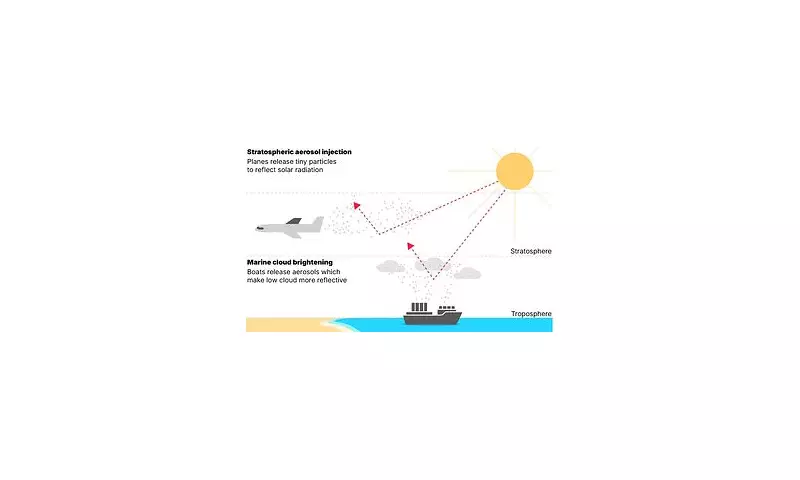
In a world grappling with escalating climate emergencies, scientists are contemplating one of the most radical interventions ever conceived: deliberately dimming the sun's power to cool our overheating planet. This controversial approach, known as solar geoengineering, is moving from scientific speculation to serious research, sparking fierce debate among climate experts and environmentalists.
What Exactly Is Solar Geoengineering?
The concept involves injecting reflective particles into the upper atmosphere to create a planetary sunshade. These microscopic aerosols would bounce a small percentage of sunlight back into space, effectively mimicking the cooling effect of large volcanic eruptions. When volcanoes like Mount Pinatubo erupted in 1991, they temporarily lowered global temperatures by approximately 0.5°C through similar mechanisms.
The Harvard Experiment That's Changing Everything
Researchers at Harvard University are pioneering this field with their Stratospheric Controlled Perturbation Experiment (SCoPEx). The project aims to release calcium carbonate particles—essentially chalk dust—into the stratosphere to study how they disperse and interact with atmospheric chemistry. While initial tests have been small-scale, the implications are planetary in scope.
Why Are Scientists Considering Such Drastic Measures?
The climate emergency is accelerating faster than predicted, with heat records shattering annually and extreme weather events becoming increasingly common. Despite global agreements and renewable energy advances, carbon emissions continue to rise, pushing Earth's systems toward dangerous tipping points. Solar geoengineering offers a potential rapid-response mechanism that could buy humanity crucial time while decarbonisation efforts continue.
The Mounting Controversy
Critics argue this technology presents unprecedented risks and ethical dilemmas:
- Unpredictable consequences: Altering atmospheric chemistry could disrupt monsoon patterns and agricultural cycles
- Moral hazard: Fossil fuel interests might use geoengineering as an excuse to delay emissions reductions
- Global governance nightmare: Who controls the planetary thermostat? What happens if one country's actions harm another?
- Termination shock: If geoengineering were suddenly stopped, temperatures could rebound dangerously fast
The Developing World's Perspective
Many climate-vulnerable nations view solar geoengineering with deep suspicion. They fear wealthy countries that caused the climate crisis might deploy these technologies unilaterally, potentially creating new climate injustices. As one Pacific Island representative noted, "We didn't break the atmosphere, and we don't want to be test subjects for fixing it."
What Happens Next?
The scientific community remains divided. Some researchers argue we have a moral obligation to explore all options to prevent climate catastrophe. Others counter that geoengineering represents a dangerous distraction from the real solution: rapidly phasing out fossil fuels.
As research advances, international regulations struggle to keep pace. The United Nations Environment Assembly recently considered a resolution to establish oversight of solar geoengineering research, but consensus remains elusive. Meanwhile, private companies are entering the field, raising concerns about profit motives influencing planetary decisions.
The debate over dimming the sun forces us to confront fundamental questions about humanity's relationship with nature and our willingness to embrace risky technological fixes for problems created by technology itself. As one climate ethicist observed, "We're engineering our way into a problem, and now we're considering engineering our way out—it's the ultimate high-stakes experiment."





